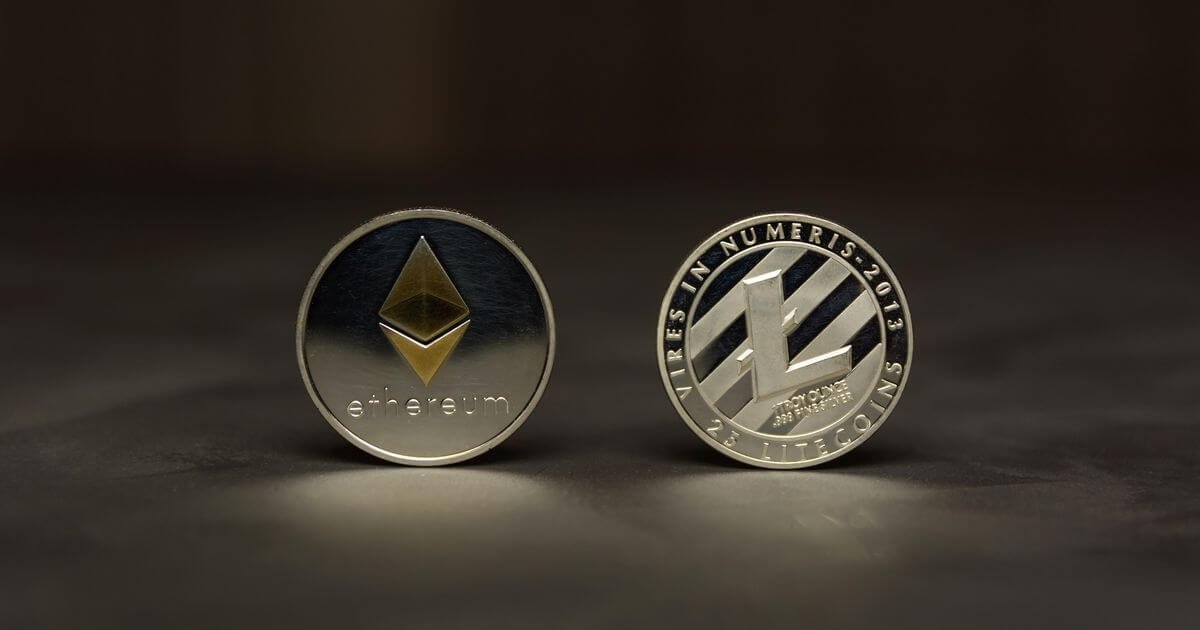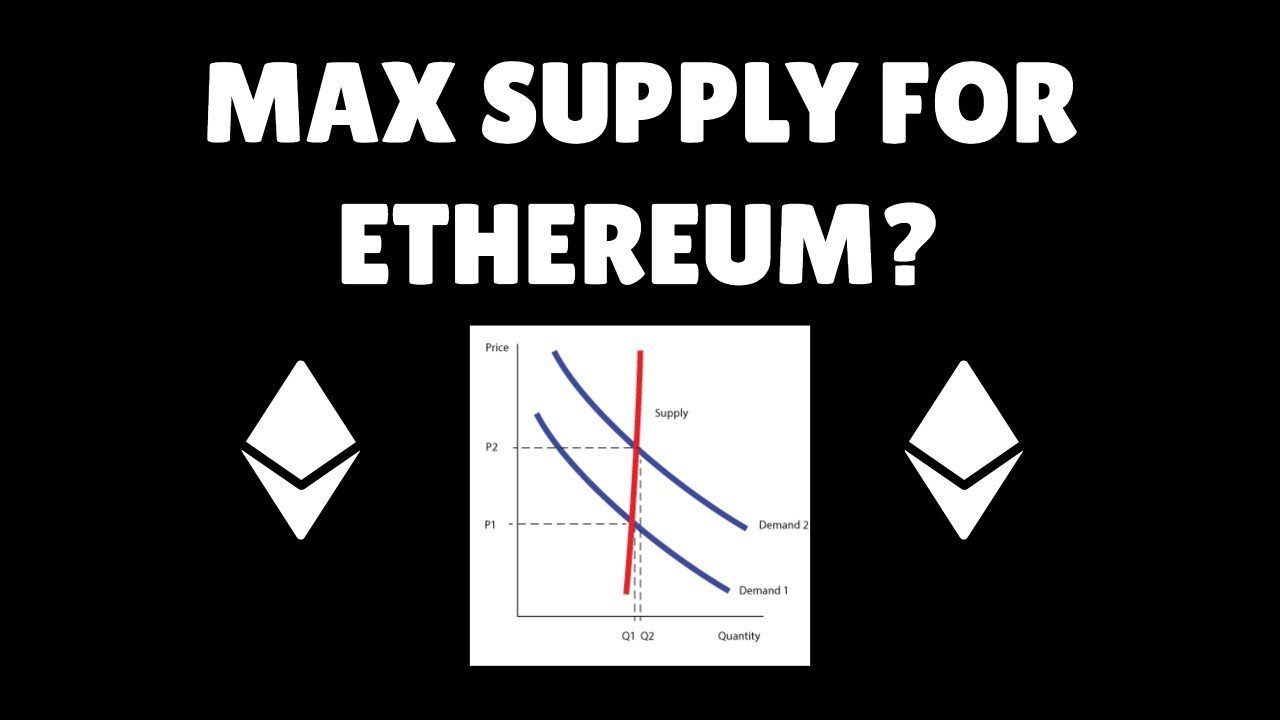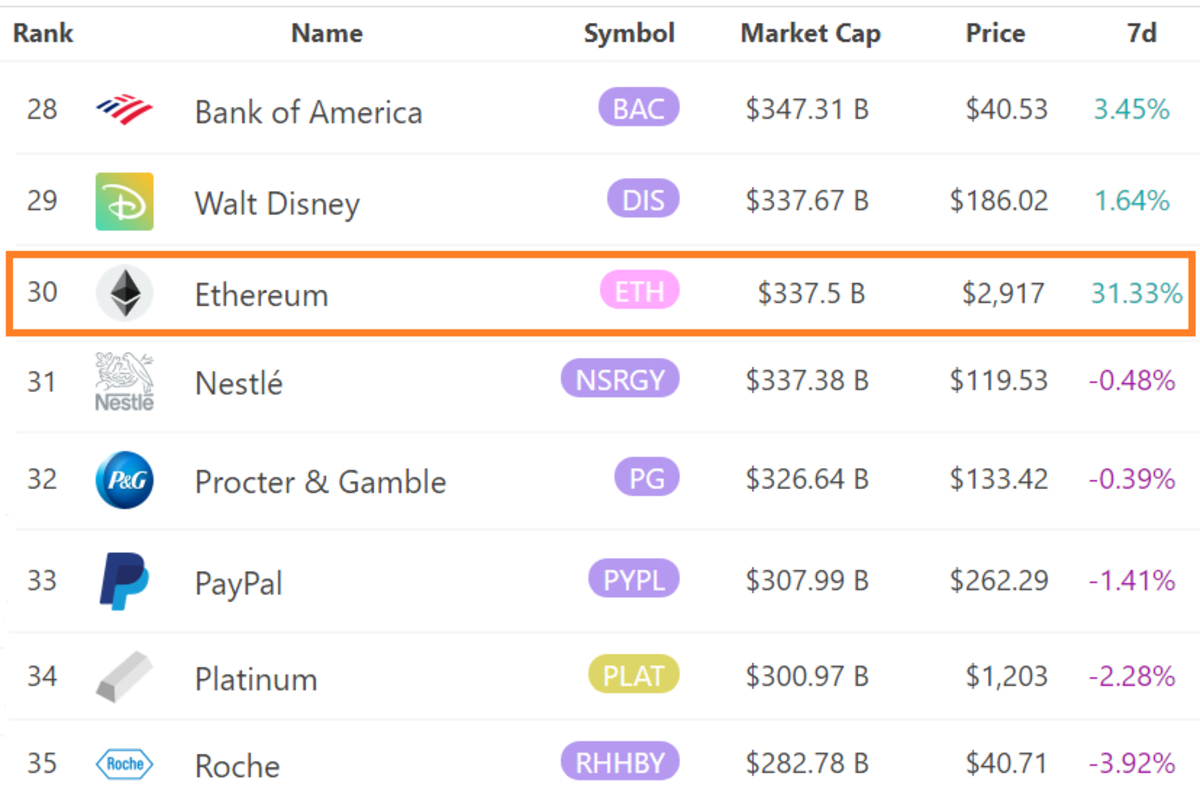Introduction
Ethereum is one of the most prominent cryptocurrencies in the digital space, known for its innovation and versatility. Launched in 2015 by Vitalik Buterin, Ethereum quickly gained popularity and became the second-largest cryptocurrency by market capitalization.
Unlike Bitcoin, which is primarily a digital currency, Ethereum goes beyond being a mere cryptocurrency. It is a blockchain-based platform that enables the creation and execution of decentralized applications (dApps) through its native programming language, Solidity.
One of the key aspects that defines a cryptocurrency is its supply. Knowing the supply of Ethereum is crucial when assessing its current value and potential for growth. In this article, we will delve into the supply of Ethereum and explore the factors that contribute to its availability in the market.
Understanding the economics behind Ethereum’s supply is essential for investors, developers, and enthusiasts alike. So, let’s dive deeper into the fascinating world of Ethereum and discover the intricacies of its supply.
What is Ethereum?
Ethereum is a decentralized, open-source blockchain platform that allows developers to build and deploy smart contracts and decentralized applications (dApps). It was created by Vitalik Buterin in 2015 with the vision of creating a programmable, global platform for decentralized applications.
Unlike Bitcoin, which functions primarily as a digital currency, Ethereum’s main focus is to provide a platform for developers to build and deploy smart contracts. Smart contracts are self-executing contracts with the terms of the agreement directly written into the code. These contracts automatically execute once the predefined conditions are met, eliminating the need for intermediaries.
Ethereum utilizes its native cryptocurrency called Ether (ETH) as the fuel for executing smart contracts on the network. Ether not only serves as a means of value transfer but also facilitates the functioning of decentralized applications by incentivizing network participants for their computational efforts.
One of the main features that sets Ethereum apart is its Turing-complete programming language called Solidity. This enables developers to write complex smart contracts and dApps on the Ethereum platform, opening up a wide range of possibilities for various industries. From decentralized finance (DeFi) applications to supply chain management solutions, Ethereum is at the forefront of blockchain innovation.
The Ethereum network operates on a consensus algorithm called Proof-of-Stake (PoS), which is set to transition from its current Proof-of-Work (PoW) mechanism. This upgrade, known as Ethereum 2.0, aims to improve scalability, security, and energy efficiency on the network, paving the way for a more sustainable blockchain ecosystem.
Ethereum has gained significant traction in the crypto community due to its flexibility and potential for innovation. Its vibrant ecosystem consists of developers, investors, and users who contribute to its growth and adoption. As a result, Ethereum has become a crucial player in the decentralized finance space, hosting a multitude of projects and protocols that offer financial services without intermediaries.
What is the supply of Ethereum?
The supply of Ethereum refers to the total number of Ether (ETH) tokens in circulation at any given time. Unlike traditional currencies issued by central banks, the supply of Ethereum is not controlled or regulated by any single entity. Instead, it is determined by a combination of factors, including the initial distribution, block rewards, and token burning.
At its inception, Ethereum conducted an Initial Coin Offering (ICO) to fund its development. During the ICO, a fixed supply of ETH tokens was created and sold to early investors in exchange for other cryptocurrencies or fiat currencies. This initial supply distribution set the foundation for the overall supply of Ethereum.
Currently, Ethereum operates on a Proof-of-Work (PoW) consensus algorithm, similar to Bitcoin. Miners compete to solve complex mathematical puzzles, and the winner is rewarded with a certain amount of newly minted ETH as a block reward. This process, known as mining, not only secures the network but also contributes to the overall supply of Ethereum.
However, Ethereum has plans to transition from Proof-of-Work to Proof-of-Stake (PoS) consensus through the Ethereum 2.0 upgrade. In PoS, validators are randomly chosen to create new blocks and secure the network based on the amount of ETH they hold and are willing to “stake” as collateral. This transition aims to reduce energy consumption and increase transaction throughput on the Ethereum network.
Additionally, Ethereum has implemented mechanisms to control its supply inflation rate. For instance, the block reward decreases over time through a process called “block reward reduction.” This reduces the amount of new ETH entering circulation and helps maintain a finite supply over the long term.
Furthermore, Ethereum has the ability to “burn” or destroy ETH tokens. This can occur through various mechanisms, including transactions with a zero address or the implementation of token burning protocols. Token burning helps to reduce the supply of Ethereum, thus potentially increasing its value.
Overall, the supply of Ethereum is continuously evolving, influenced by various factors such as initial distribution, block rewards, and token burning. By understanding the dynamics of Ethereum’s supply, stakeholders can better analyze and assess its potential value and market dynamics.
Ethereum ICO and Supply Distribution
When Ethereum was launched in 2015, it conducted an Initial Coin Offering (ICO) to raise funds for its development. During the ICO, a fixed supply of Ether (ETH) tokens was created and sold to early investors in exchange for other cryptocurrencies or fiat currencies. This ICO marked the initial distribution of Ethereum’s supply.
The ICO took place over a period of 42 days, starting on July 20, 2014, and ending on September 2, 2014. In total, approximately 60 million ETH tokens were sold, constituting about 72% of the total supply at the time. The remaining 28% was reserved for the Ethereum Foundation, which is responsible for ongoing development and support of the platform.
During the ICO, investors had the opportunity to purchase ETH at different price points. The initial price was set at around 2000 ETH per Bitcoin (BTC), with bonus structures in place for early contributors. As the ICO progressed, the price increased gradually, incentivizing early participation.
The ICO distribution strategy aimed to ensure widespread ownership and decentralization of Ethereum. By allowing various individuals and organizations to participate, Ethereum created a diverse and inclusive ecosystem from the very beginning.
Following the ICO, the Ethereum Foundation held a significant portion of the overall supply. However, it has been gradually reducing its holdings over time to avoid centralization concerns. The foundation’s ETH holdings are typically used to fund development, research, and community initiatives, with transparent reporting of its activities.
In addition to the ICO distribution, Ethereum’s supply has been influenced by other factors such as mining rewards and token burning. Miners, who secure the network by validating transactions and creating new blocks, receive a block reward in the form of newly minted ETH. This ongoing issuance contributes to the overall supply of Ethereum.
Token burning, on the other hand, reduces the supply of Ethereum. This process involves destroying ETH tokens through various mechanisms, such as implementing token burning protocols or sending ETH to a zero address from which it cannot be recovered. Token burning mechanisms are implemented to control supply inflation and potentially increase the value of existing ETH tokens.
With its diverse and decentralized supply distribution, Ethereum continues to foster innovation and development in the blockchain space. The ICO and subsequent distribution have laid the foundation for Ethereum’s growth and widespread adoption, enabling developers and investors to participate and contribute to the platform’s ongoing success.
Ethereum Block Reward
Just like Bitcoin and many other blockchain networks, Ethereum utilizes a mining process to secure its network and validate transactions. Miners on the Ethereum network compete to solve complex mathematical puzzles, and the winner is rewarded with a block reward in the form of newly minted Ether (ETH).
When Ethereum was initially launched, the block reward was set at 5 ETH per block. However, Ethereum has implemented a mechanism known as the “block reward reduction” to control inflation and regulate the issuance of new ETH tokens. This reduction mechanism aims to gradually decrease the block reward over time, ultimately reaching a point where the supply of new ETH becomes minimal.
The block reward reduction is a deliberate economic design intended to strike a balance between incentivizing miners to secure the network and preventing the rapid inflation of the overall supply of Ethereum. By reducing the block reward, Ethereum encourages more efficient mining practices and ensures a gradual and controlled issuance of new ETH.
The reduction of the block reward occurs through a series of planned steps. For example, the Byzantium hard fork implemented in October 2017 reduced the block reward from 5 ETH to 3 ETH. Then, the Constantinople hard fork in February 2019 further reduced the block reward to 2 ETH.
It’s important to note that the block reward reduction mechanism is separate from the frequency of block creation. The Ethereum network has an average block time of around 15 seconds, meaning that a new block is added to the blockchain roughly every 15 seconds. This block time is relatively fast compared to other blockchain networks, ensuring faster transaction confirmations and network scalability.
The block reward serves multiple purposes. Firstly, it incentivizes miners to allocate their computational resources to secure the network. Secondly, it introduces new ETH into circulation, increasing the overall supply and ensuring liquidity in the market. Finally, the block reward provides a mechanism for distributing ETH to network participants who contribute to its security and decentralization.
As Ethereum transitions from Proof-of-Work (PoW) to Proof-of-Stake (PoS) through the Ethereum 2.0 upgrade, the block reward mechanism will likely undergo further changes. In the PoS consensus model, block validations will be performed by validators, who will be rewarded with transaction fees instead of block rewards. This transition is expected to significantly reduce energy consumption and enhance the scalability and efficiency of the Ethereum network.
By regulating the block reward and gradually decreasing its issuance, Ethereum ensures a sustainable and controlled supply of new ETH tokens, contributing to the long-term stability and economic dynamics of the Ethereum ecosystem.
Ethereum Supply Inflation
Ethereum, like many other cryptocurrencies, follows a predetermined issuance schedule to regulate its supply inflation. In the context of Ethereum, supply inflation refers to the rate at which new Ether (ETH) tokens enter circulation. Understanding supply inflation is crucial for evaluating the potential impact on the overall value and market dynamics of Ethereum.
The initial issuance of new ETH tokens primarily occurs through the mining process. Miners who participate in securing the Ethereum network and validating transactions are rewarded with newly minted ETH as a block reward. This block reward serves as an incentive for miners and helps facilitate the ongoing operation and security of the network.
However, Ethereum has implemented measures to control supply inflation over time. One significant mechanism is the reduction of the block reward, as mentioned in the previous section. By gradually decreasing the block reward, Ethereum aims to limit the rate at which new ETH tokens are issued. This reduction is designed to strike a balance between incentivizing miners and preventing excessive inflation of the overall supply.
Furthermore, Ethereum is in the process of transitioning from a Proof-of-Work (PoW) consensus algorithm to a Proof-of-Stake (PoS) consensus through the Ethereum 2.0 upgrade. With PoS, validators are chosen to create new blocks based on the amount of ETH they hold and are willing to stake as collateral. This transition is expected to greatly reduce energy consumption and adjust the supply inflation rate, as there will no longer be a traditional block reward issuance.
Aside from the mechanisms mentioned above, Ethereum also has the potential for token burning, which can help counterbalance supply inflation. Token burning is the deliberate destruction of existing ETH tokens, reducing the overall supply. This process can be implemented through various means, such as transaction fees collected and burned or the implementation of specific protocols that involve burning tokens in a decentralized manner.
It is worth noting that Ethereum’s supply inflation rate is not fixed and may vary over time due to network upgrades, economic considerations, and community consensus. Supply inflation is an integral aspect of any cryptocurrency ecosystem, and managing it effectively is crucial for maintaining a stable and sustainable growth trajectory.
By implementing mechanisms such as block reward reduction, transitioning to Proof-of-Stake, and the potential for token burning, Ethereum aims to strike a balance between providing incentives to network participants and controlling the rate of supply inflation. These measures contribute to Ethereum’s overall economic stability and provide investors and users with greater confidence in the long-term value proposition of the platform.
Ethereum Supply and Market Cap
The supply of Ethereum plays a crucial role in determining its market capitalization, which is a key metric used to assess the overall value and market perception of a cryptocurrency. Understanding the relationship between Ethereum’s supply and market cap is essential for investors, traders, and enthusiasts in gauging the platform’s prominence and potential.
Ethereum’s supply is dynamic and continuously evolving. It starts with the initial distribution of Ether (ETH) during the ICO phase, where a fixed supply of tokens is created and sold to early investors. This initial distribution sets the foundation for the overall supply of Ethereum.
As mentioned earlier, Ethereum operates on a Proof-of-Work (PoW) consensus algorithm, where miners secure the network, validate transactions, and are rewarded with newly minted ETH as a block reward. This ongoing issuance of new ETH contributes to the gradual increase in supply.
In addition to mining rewards, Ethereum’s supply can also be influenced by token burning mechanisms. Token burning involves the deliberate destruction of existing ETH tokens, reducing the total supply. This can be implemented through various protocols or mechanisms, providing a potential mechanism to counterbalance supply inflation and potentially increase the value of existing tokens.
The market capitalization of Ethereum is calculated by multiplying the current price per ETH token by the total supply in circulation. In other words, it represents the total value of all ETH tokens that investors are willing to pay based on market demand and perceived value.
As Ethereum’s supply increases over time, the market cap is affected in several ways. An increase in supply without an equivalent increase in demand may result in the dilution of value, potentially leading to a decrease in market cap. Conversely, an increase in demand for ETH, either through increased adoption or investment, can boost market cap even with a growing supply.
Ethereum’s market cap is subject to fluctuations driven by various factors such as market sentiment, technological advancements, regulatory changes, and macroeconomic conditions. It is important to note that market cap alone should not be the sole criterion for assessing the potential of Ethereum or any other cryptocurrency, as it can be influenced by speculative activities and short-term market trends.
Additionally, Ethereum’s market cap is also influenced by its position relative to other cryptocurrencies. As it is currently the second-largest cryptocurrency by market capitalization after Bitcoin, changes in Ethereum’s supply and demand can have a significant impact on the overall cryptocurrency market.
By closely monitoring the dynamics between Ethereum’s supply and market capitalization, investors can gain insights into the market sentiment, growth potential, and overall attractiveness of the Ethereum ecosystem. However, it is important to conduct thorough research and consider multiple factors before making any investment decisions in the cryptocurrency market.
Conclusion
Ethereum has emerged as a leading cryptocurrency and blockchain platform, with its supply and distribution playing a crucial role in its success. By understanding the fundamentals of Ethereum’s supply, investors, developers, and enthusiasts can gain valuable insights into its market dynamics and potential for growth.
We explored how the initial distribution of Ethereum occurred through its ICO, allowing for widespread ownership and decentralization. The block reward system incentivizes miners to secure the network and helps regulate the supply inflation. The ongoing reduction of the block reward and the transition to Proof-of-Stake further contribute to controlling supply inflation and maintaining a sustainable growth trajectory.
Furthermore, Ethereum’s market capitalization is influenced by its supply, demand, and overall market sentiment. The interplay between these factors determines the perceived value of Ethereum and its relative position in the cryptocurrency market.
It is important to emphasize that Ethereum’s supply is not static and can be subject to changes driven by network upgrades, economic considerations, and community consensus. However, Ethereum’s consistent focus on innovation, widespread adoption, and supportive ecosystem has positioned it as a significant player in the blockchain industry.
As the Ethereum network continues to evolve and undergo transformative changes, from the Ethereum 2.0 upgrade to the exploration of new use cases, stakeholders must stay informed and adapt to the evolving supply dynamics.
In conclusion, understanding the supply of Ethereum is essential for anyone interested in the cryptocurrency market. By examining the ICO and supply distribution, block rewards, supply inflation, and market capitalization of Ethereum, stakeholders can better evaluate its potential value and navigate the rapidly changing blockchain landscape.

























